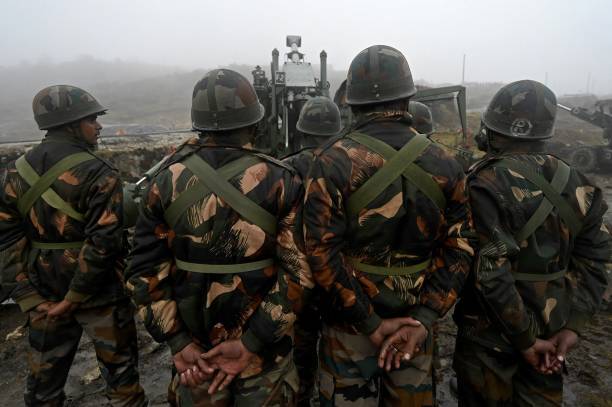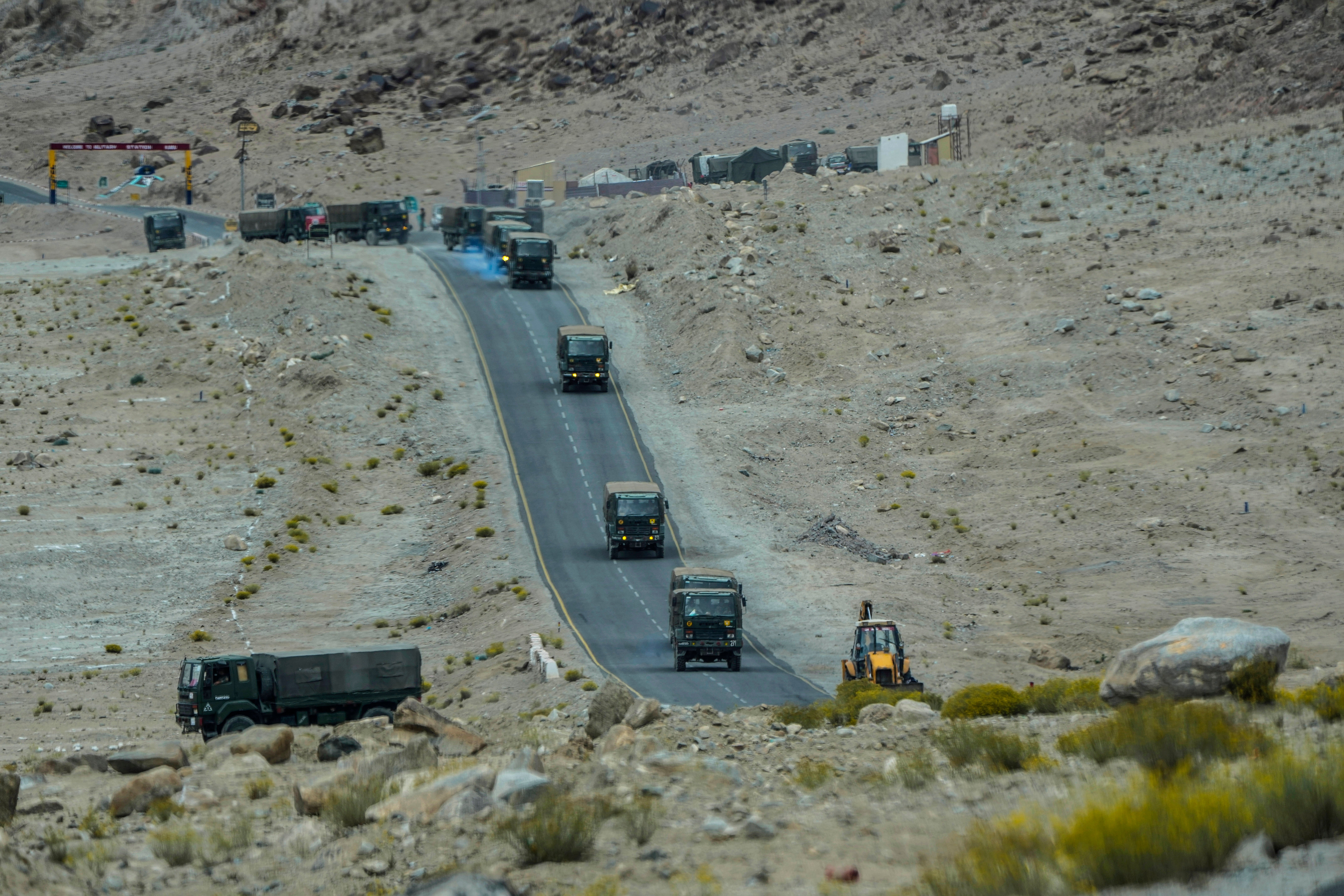Indian and Chinese troops clash at border ‘with spiked clubs and stun guns’
Tensions high as hundreds of soldiers involved in most significant clash for more than two years

Your support helps us to tell the story
From reproductive rights to climate change to Big Tech, The Independent is on the ground when the story is developing. Whether it's investigating the financials of Elon Musk's pro-Trump PAC or producing our latest documentary, 'The A Word', which shines a light on the American women fighting for reproductive rights, we know how important it is to parse out the facts from the messaging.
At such a critical moment in US history, we need reporters on the ground. Your donation allows us to keep sending journalists to speak to both sides of the story.
The Independent is trusted by Americans across the entire political spectrum. And unlike many other quality news outlets, we choose not to lock Americans out of our reporting and analysis with paywalls. We believe quality journalism should be available to everyone, paid for by those who can afford it.
Your support makes all the difference.More than 250 Chinese and Indian soldiers have clashed at the countries’ disputed border, officials say, leading to a significant rise in tensions between the two Asian giants.
The Chinese soldiers outnumbered their Indian counterparts by four to one and were armed with crude weapons, including spiked clubs, monkey fists and stun guns when they attacked Indian units in the tense Yangtse area of Arunachal Pradesh’s Tawang sector, causing injuries on both sides, said the Indian Army yesterday.
While it remains unclear whether live ammunition was used during China’s incursion, which took place last Friday, multiple media outlets reported the details of hand-to-hand combat citing sources.
At least 50 Indian troops were quickly mobilised in the dead of the night to respond to an incursion of 200 Chinese soldiers, reported the Indian Express, with sources describing the clash as “more than pushing and shoving”.
Much of the border between India and China is disputed by both countries, with the entire Indian state of Arunachal Pradesh claimed by Beijing as part of its territory. Tensions over the dispute reached a peak in June 2020 when 20 Indian soldiers and an unspecified number of Chinese forces were killed a brutal skirmish.
Though the extent of injuries sustained by troops on either side in Friday’s incident remains unclear, India’s defence minister Rajnath Singh told the country’s parliament that “no fatalities or serious casualties” were sustained by the army.
“The ensuing face-off led to a physical scuffle in which the Indian Army bravely prevented the PLA from transgressing into our territory and compelled them to return to their posts,” he said as he lauded the Indian soldiers for contesting the incursion in a “firm and resolute manner”.
The soldiers from “both the sides immediately disengaged from the area”, the Indian Army said, adding that the incident was followed by its commander in the area holding a meeting with his Chinese counterpart.
Mr Singh told the parliament that the “Chinese side was asked to refrain from such actions and maintain peace and tranquility along the border”.
“The issue has also been taken up with the Chinese side through diplomatic channels,” he added.
Asked about the clashes during a briefing on Tuesday, China’s foreign ministry spokesperson Wang Wenbin said the situation at the border was “generally stable”.
A spokesperson from the Western Theatre Command of the PLA later claimed that it was the Indian troops who “illegally crossed the line to block” a routine patrol of the Chinese border force.
“We urge the Indian side to strictly control and restrain the frontline troops, and work with China to maintain peace and security on the border,” the spokesperson said.
According to media reports, Chinese forces advanced to what India views as the de facto border or Line of Actual Control (LAC), located about 35km from Tawang, where a similar clash occurred in October 2021.
At that officials on both sides also remained tight-lipped, with sources indicating that there was a physical engagement between the troops on both sides but no significant damages to Indian defences in the sector.
Explaining the importance of the region where the dispute took place, Sushant Singh, a senior fellow at the Delhi-based Centre for Policy Research said Tawang “used to be part of Tibet”.
“Tawang has the second biggest monastery of Tibetan Buddhism. Tawang is where the sixth Dalai Lama was born in the 17th century. It used to originally be part of Tibet. And China has always claimed Tawang and never conceded it,” he told The Independent. “And therefore the Chinese interest in Tawang has always been there. It is one of the most important areas on the disputed border between India and China.”

China has been trying to drive out the Indian soldiers from their Tawang post for some time, said Mr Singh, citing the October 2021 incident.
“The fact that an attack came is the depiction of the Chinese intent. The fact that the Chinese want to throw the Indians out, [and] the Indians hold the post.
“If the Indians were not well prepared, they would have lost the post. [But] the post remains in Indian control. Of course, if there is a clash, there will be a few losses and a few people will be injured.”
The incursion comes days after China expressed its objections to joint military exercises between India and US in the Himalayan state of Uttarakhand, calling it a violation of a border agreement between the two countries. The drills, which began on 16 November, spanned 15 days and were carried out less than 100km from the border with China.
It also comes at a significant time for India geopolitically, days after the country assumed the presidency of the G20 with a vow from Narendra Modi to bring the world together to tackle its “greatest challenges”.
Mr Singh suggested the timing may be “more tactical and [for] operational reasons” than symbolic, suggesting China “may have been waiting for an opportune time, when the weather is refined, when they are well prepared”.
But the clash is certain to have geopolitical ramifications, especially if tensions cannot be cooled back down. “The world is yet to sort the Russia-Ukraine conflict,” says Kalpit A Mankikar, a fellow at the Observer Research Foundation, another Indian think-tank. “A conflict in Asia would have huge consequences in the region, given that it would be between the world’s second and fifth largest economies and two nuclear powers.”
Protocols agreed to keep peace at the border in the event of an interaction between the two sides have weakened after the 2020 skirmishes, says retired Lieutenant General Deependra Singh Hooda.
“The normal process earlier used to be [if] the patrol came, you would have what was called a banner drill. Show a banner and the troops would go back. The protocol said there would be no physical clashes, violence should be avoided. Now those seem to have weakened.”
Join our commenting forum
Join thought-provoking conversations, follow other Independent readers and see their replies
Comments